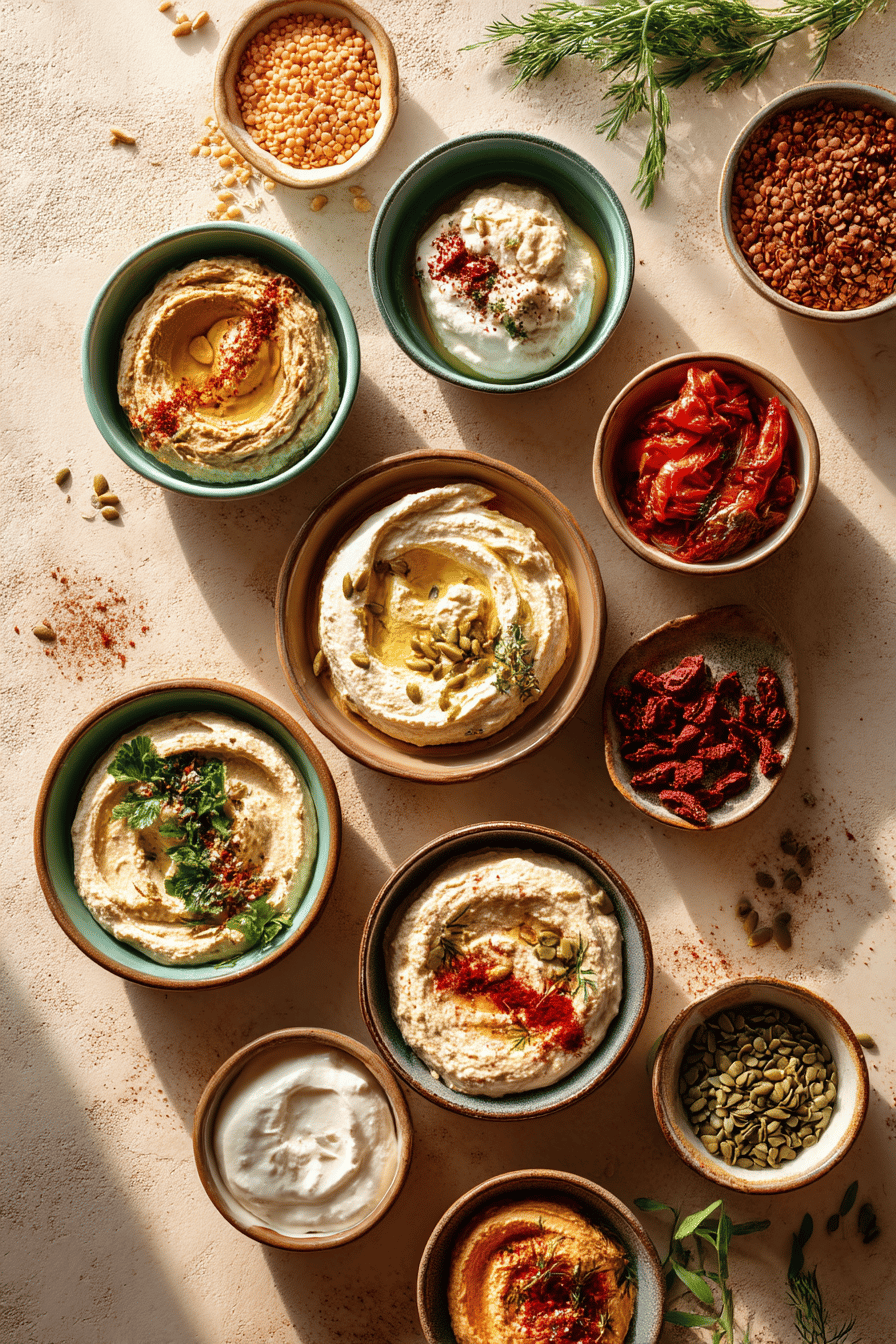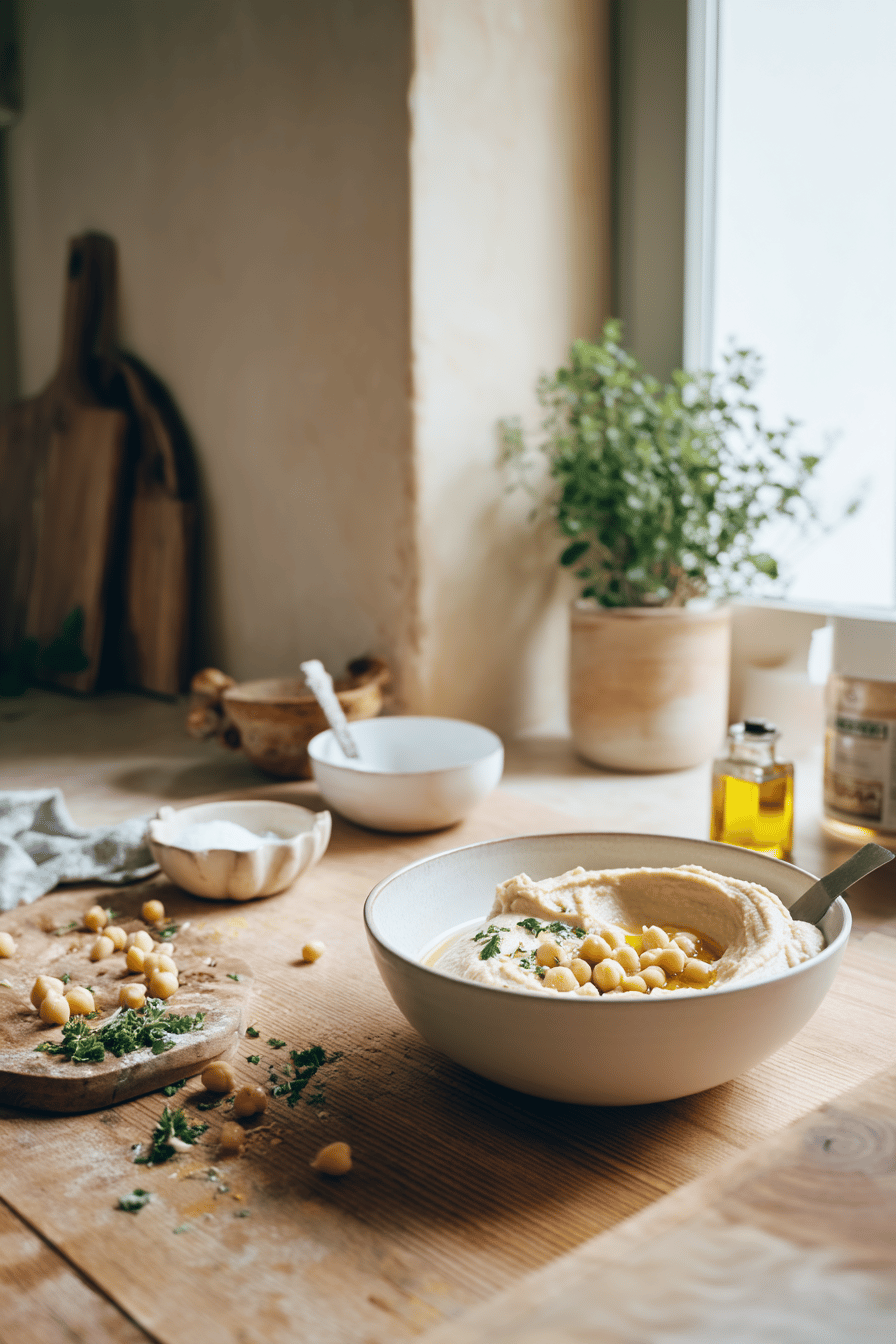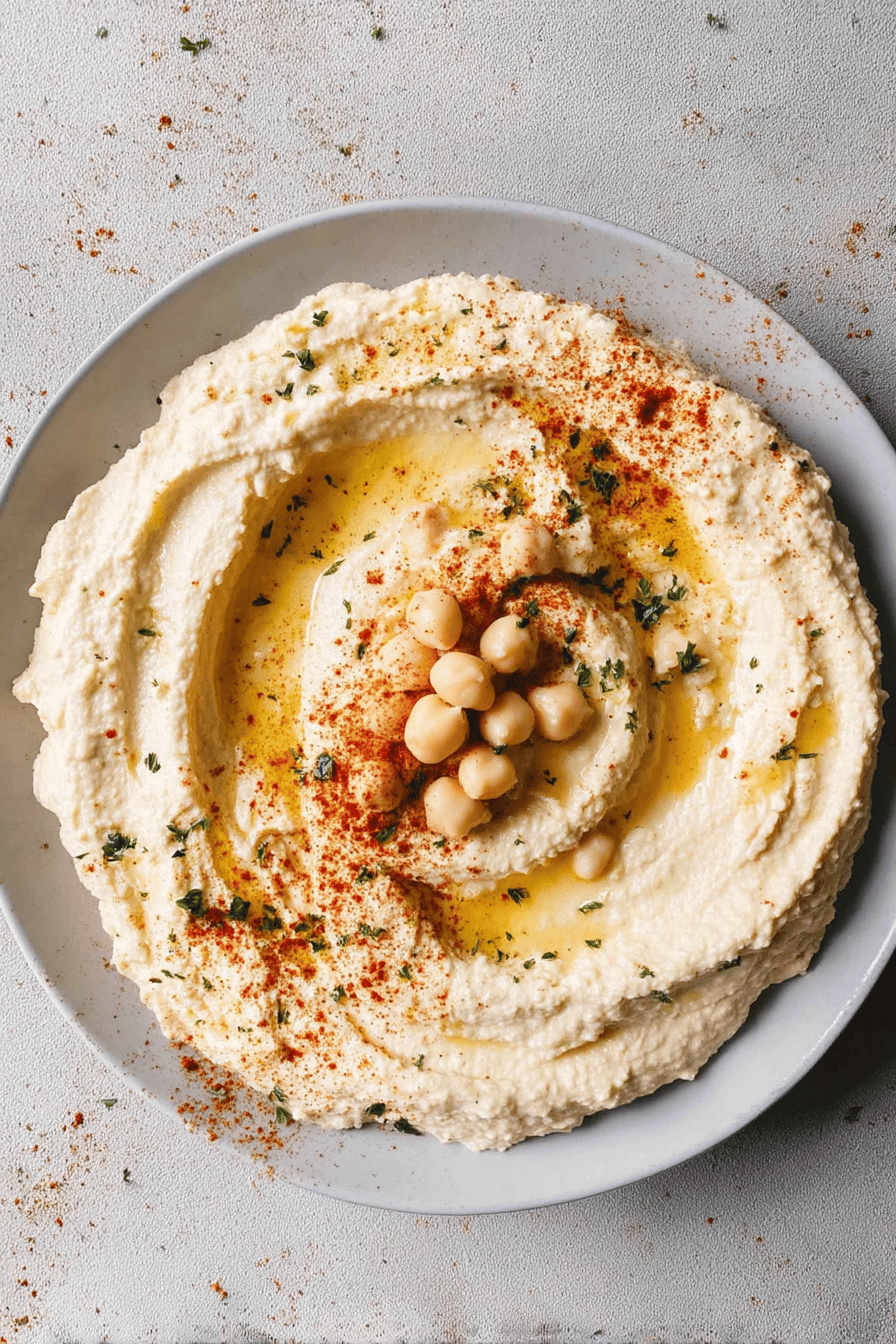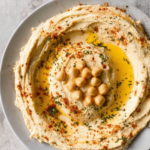Benefits and Advantages of Creamy Hummus Recipe
The creamy hummus recipe stands out due to its simplicity and nutritious profile, making it an excellent choice for home cooks of all skill levels. It requires minimal ingredients and basic kitchen tools, which makes preparation both quick and accessible. The smooth, velvety texture is achieved through high-quality tahini and perfectly cooked chickpeas, resulting in rich flavor and satisfying creaminess.
This recipe promotes health by providing a good source of plant-based protein, dietary fiber, and healthy fats, supporting heart health and digestion. With all natural ingredients that are vegan and gluten-free by nature, it fits comfortably into many dietary lifestyles. Versatility is another key advantage; creamy hummus works well not just as a dip but also as a spread, salad topper, or ingredient in various dishes. The focus on a smooth, luscious consistency appeals to a broad range of palates seeking both taste and wholesome nutrition.
Also known as silky chickpea spread or velvety bean dip, this creamy hummus recipe is an essential kitchen staple that combines flavor and nourishment.
Essential Ingredients for Creamy Hummus Recipe
Each ingredient in this creamy hummus recipe plays a vital role in achieving the perfect texture, flavor, and nutritional balance. Below is the key ingredient list with precise measurements designed to make a smooth, flavorful dip suitable for many dietary needs.
- 1 can (15 ounces/400 grams) chickpeas, rinsed and drained, or about 1 ½ cups cooked chickpeas
- ½ teaspoon baking soda (if using canned chickpeas)
- ¼ cup (60 ml) fresh lemon juice (from 1 ½ to 2 lemons), more to taste
- 1 medium-to-large clove garlic, roughly chopped (optional; adjust or omit to taste)
- ½ teaspoon fine sea salt, to taste
- ½ cup (120 grams) tahini
- 2 to 4 tablespoons ice water or aquafaba (liquid from chickpea can), more as needed
- ½ teaspoon ground cumin
- 1 tablespoon extra-virgin olive oil, plus extra for garnish
Optional garnishes:
- Drizzle of olive oil
- Sprinkle of ground sumac, paprika, or smoked paprika
- Chopped fresh parsley
- Reserved whole chickpeas
For deeper understanding of tahini’s health benefits, see Tahini: Nutrition and Culinary Uses.

Dietary Substitutions to Customize Your Creamy Hummus Recipe
This creamy hummus recipe can be easily customized to meet different dietary requirements and ingredient availabilities without losing its signature smoothness and flavor.
- Tahini allergy or low-fat option: Substitute tahini with plain yogurt for a lighter texture or sunflower seed butter as a nut-free alternative.
- Oil-free version: Replace olive oil with water or aquafaba to maintain smoothness while reducing fat.
- Garlic sensitivity: Omit or reduce raw garlic; add roasted red peppers or fresh herbs like basil for flavor enhancements without allergens.
- Protein boost: Mix chickpeas with white beans or lentils while keeping the base plant-based and gluten-free.
- Spice modifications: Adjust or omit cumin and paprika to suit taste preferences or avoid nightshades.
These modifications preserve the creamy chickpea spread’s appeal while expanding its accessibility. For creative ways to enjoy hummus and related recipes, visit our Hummus and Veggie Platter recipe.

How to Prepare the Perfect Creamy Hummus Recipe: Step-by-Step Guide
- Prepare chickpeas: Drain and rinse 1 ½ cups of cooked chickpeas if using canned to reduce sodium. Alternatively, soak dried chickpeas overnight and boil until tender for a creamier texture. Use baking soda during boiling to soften skins.
- Blend primary ingredients: In a food processor, combine chickpeas, ½ cup tahini, ¼ cup fresh lemon juice, roughly chopped garlic, and ½ teaspoon salt. Blend until ingredients start to become smooth.
- Add olive oil and liquid: With the processor running, slowly drizzle in 1 tablespoon extra-virgin olive oil and 2 tablespoons ice water or aquafaba. Blend until mixture becomes creamy and pale. Add more liquid if needed to reach desired consistency.
- Incorporate spices: Add ½ teaspoon ground cumin and blend again until fully incorporated. Adjust seasoning with additional lemon juice, garlic, or salt to taste.
- Final blending: Continue blending for about 2 minutes to achieve a super smooth and fluffy texture, scraping sides as necessary.
- Serve and garnish: Transfer hummus to a serving bowl, create a decorative swirl or well on top, drizzle with olive oil, and garnish with reserved chickpeas, chopped parsley, and a sprinkle of sumac or paprika.
Chilling hummus for at least one hour before serving helps flavors meld and thickens texture. For more detailed techniques on creating perfect creamy hummus, visit How to Make Creamy Hummus.
Advanced Tips and Variations
For a truly smooth, creamy hummus, start by using ice-cold water or aquafaba during blending, which lightens the texture and gives a fluffier, paler dip. Though peeling chickpeas is optional, removing the skins can yield an ultra-smooth consistency if you have the time. To add vibrant flavors, experiment by blending in roasted red peppers, sun-dried tomatoes, or Kalamata olives. For a spicy kick, incorporate jalapeños or a sprinkle of smoked paprika.
For those who want extra nutritional benefits, mix in superfoods like chia seeds or spirulina powder without compromising flavor. To keep portions handy, freeze hummus in ice cube trays and thaw individual cubes as needed. Remember, the choice of high-quality tahini, preferably from sesame seeds origin, makes a noticeable difference in creaminess and authenticity.
These creative tweaks and storage ideas transform a classic creamy hummus recipe into versatile dishes tailored to your taste and lifestyle.
How to Store Creamy Hummus Recipe: Best Practices
Store your creamy hummus in an airtight container in the refrigerator to maintain freshness and prevent oxidation, which affects flavor. Proper refrigeration keeps the hummus fresh for up to one week. For longer storage, freeze the hummus in small portions inside airtight containers or freezer bags. It is best consumed within 2 to 3 months when frozen.
When ready to use frozen hummus, thaw it overnight in the fridge, then stir well to restore the velvety texture. Avoid microwaving hummus directly as heat can alter its consistency and flavor. Freezing without olive oil topping is recommended to retain the best quality. These storage methods help keep your homemade creamy hummus delicious and safe for multiple servings.
Nutritional Value of Creamy Hummus Recipe
| Nutrient | Amount (per 3 tablespoons) |
|---|---|
| Calories | About 100 |
| Fat | 7 grams (1 gram saturated fat) |
| Sodium | 400 milligrams (varies with added salt) |
| Carbohydrates | 5 grams (including 3 grams fiber) |
| Protein | 3 grams |
| Vitamins & Minerals | Contains small amounts of calcium, iron, potassium, vitamin A, and vitamin C |
This creamy hummus offers a balanced mix of healthy fats, plant-based protein, and fiber, making it a nutritious snack or addition to meals. Its rich micronutrient content supports heart health and digestion, fitting well into vegan and gluten-free diets.

FAQs: Frequently Asked Questions About Creamy Hummus Recipe
How can I make my hummus extra creamy without peeling chickpeas?
To achieve a creamy hummus without peeling chickpeas, cook canned or dried chickpeas with baking soda for 20 minutes (canned) or up to 1 hour (dried) until they are very soft and their skins start to loosen. This process softens the skins so they blend smoothly, eliminating the need to peel. Use a powerful blender or food processor to puree the mixture thoroughly, adding ice-cold water gradually to lighten the texture and color for a smooth, velvety finish.
What is the best way to cook dried chickpeas quickly for making hummus?
To cook dried chickpeas quickly, boil them with about 1 teaspoon of baking soda in water for 1 to 1 hour and 15 minutes until they become very soft and start to fall apart. Baking soda helps break down the chickpeas’ skins and reduces cooking time. After cooking, rinse them well before blending with other ingredients. This method avoids the need for overnight soaking and results in an ideal texture for creamy hummus.
How do I reduce the sharpness of garlic in homemade hummus?
To mellow raw garlic’s harshness, finely mince the garlic and soak it in fresh lemon juice for at least 10 to 30 minutes before mixing it into your hummus. Lemon juice neutralizes some of the garlic’s bite while preserving its flavor. This simple step results in a smoother, less pungent garlic taste that blends well with the other ingredients without overpowering them.
What type of lemon juice should I use to get the best flavor in hummus?
For the freshest and brightest flavor in hummus, always use freshly squeezed lemon juice. Store-bought lemon juice often tastes stale or acidic, which can dull the overall flavor of your hummus. Fresh lemon juice adds natural brightness and a clean citrus note that balances the creaminess of tahini and chickpeas.
How long does homemade hummus last in the fridge and can it be frozen?
Homemade hummus will keep fresh for up to one week when stored in an airtight container in the refrigerator. For longer storage, you can freeze hummus for 4 to 6 months. When freezing, avoid adding olive oil on top, and thaw it overnight in the fridge. Stir the hummus well before serving as some separation may occur during freezing.

Hummus Recipe: How to Make Smooth, Creamy Hummus with Easy Tips and Variations
- Total Time: 1 hour 40 minutes
- Yield: 2 cups 1x
- Diet: Vegan
Description
🥙 Dive into the smooth and creamy delight of homemade hummus that’s perfect for dipping or spreading!
🧄 Bursting with fresh lemon and garlic flavors, this hummus offers a nutritious snack or appetizer option.
Ingredients
1 can (15 ounces/400 grams) chickpeas, rinsed and drained, or about 1 ½ cups cooked chickpeas
½ teaspoon baking soda (if using canned chickpeas)
¼ cup (60 ml) fresh lemon juice (from 1 ½ to 2 lemons), more to taste
1 medium-to-large clove garlic, roughly chopped (optional; adjust or omit to taste)
½ teaspoon fine sea salt, to taste
½ cup (120 grams) tahini
2 to 4 tablespoons ice water or aquafaba (liquid from chickpea can), more as needed
½ teaspoon ground cumin
1 tablespoon extra-virgin olive oil, plus extra for garnish
Garnishes: drizzle of olive oil, a sprinkle of ground sumac, paprika, or smoked paprika, chopped fresh parsley, and reserved whole chickpeas (optional)
Instructions
1. If using canned chickpeas, place them in a medium saucepan with baking soda, cover with water by several inches, and bring to a boil. Boil for about 20 minutes until chickpeas are soft and skins start to fall off. Drain and rinse under cool water. Peeling chickpeas is optional but not required for creamy texture.
2. In a food processor or blender, combine lemon juice, garlic, and salt. Process until garlic is finely chopped, then let the mixture rest for at least 10 minutes to mellow the garlic flavor.
3. Add the tahini and blend until thick and creamy, scraping down the sides as needed.
4. While blending, drizzle in 2 tablespoons of ice water or aquafaba. Blend until mixture is smooth, pale, and creamy. Add more liquid if needed to reach desired creaminess.
5. Add ground cumin and the drained chickpeas. While blending, drizzle in olive oil and blend for about 2 minutes until super smooth, scraping sides as needed. Adjust texture with additional ice water or aquafaba if necessary.
6. Taste and adjust lemon juice, salt, and garlic as preferred.
7. Transfer to a serving bowl, create decorative swooshes or a well in the center, drizzle with olive oil, and garnish with reserved chickpeas, chopped parsley, and a sprinkle of sumac or paprika.
Notes
🥄 Baking soda helps soften chickpeas and loosen skins for a smoother texture without peeling.
🌿 Use high-quality tahini, preferably from origin seeds, for authentic creaminess and flavor.
❄️ Ice-cold water or aquafaba lightens the hummus and results in a fluffier, paler texture.
- Prep Time: 20 minutes
- Chill Time: 1 hour
- Cook Time: 20 minutes
- Category: Appetizer
- Method: Blending
- Cuisine: Middle Eastern
Nutrition
- Serving Size: 3 tablespoons
- Calories: 100
- Sugar: 0g
- Sodium: 400mg
- Fat: 7g
- Saturated Fat: 1g
- Unsaturated Fat: 6g
- Trans Fat: 0g
- Carbohydrates: 5g
- Fiber: 3g
- Protein: 3g
- Cholesterol: 0mg
Keywords: Hummus, Creamy Hummus, Easy Hummus Recipe, Hummus Variations

